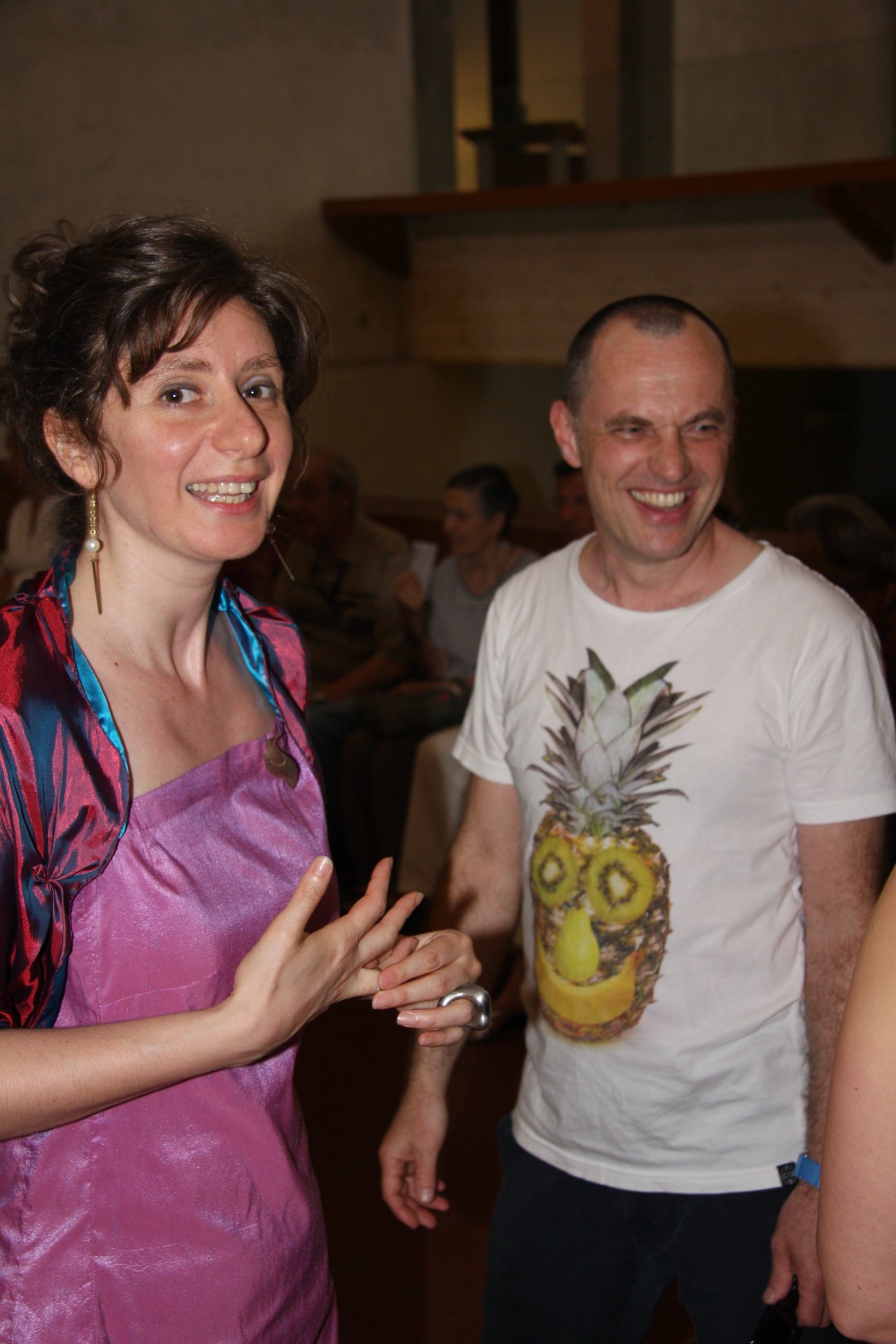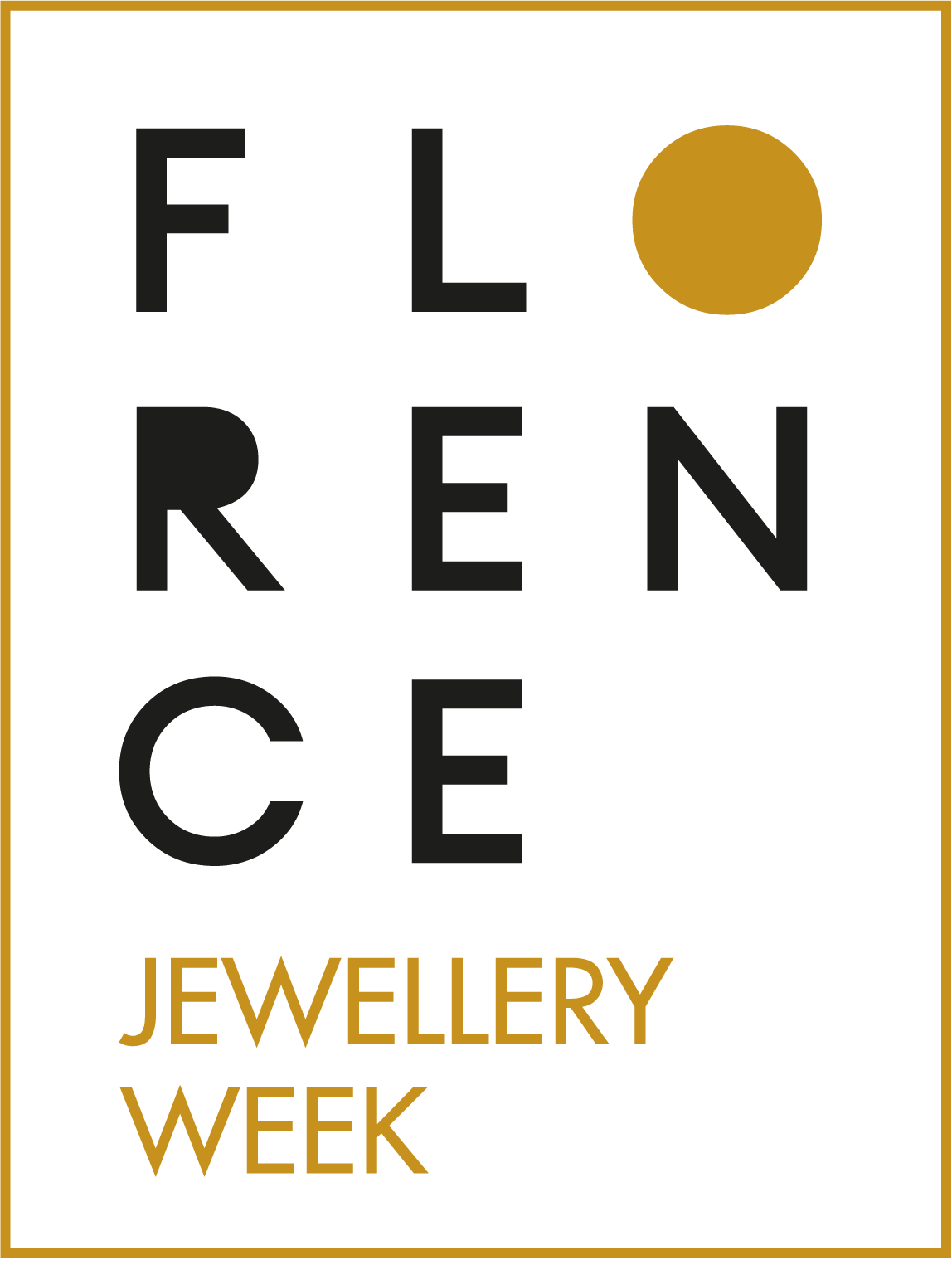Oggi, esattamente un anno fa, ci lasciava Maria Cristina Bergesio, una figura che per tanti anni ha accompagnato la crescita della scuola Le Arti Orafe, contribuendo a renderla un’istituzione didattica di riferimento riconosciuta a livello internazionale, offrendo a giovani orafi gli strumenti per maturare una coscienza critica da affiancare alla necessaria competenza tecnica, per poter proiettare il proprio lavoro verso orizzonti di ricerca artistica.
Dal 2005 e fino al 2019 Maria Cristina è stata docente del corso di Storia del gioiello contemporaneo, occupandosi nei primi anni anche della direzione artistica della galleria aperta da LAO a Firenze e sempre dedicata al gioiello di ricerca. Soprattutto, Bergesio è stata curatrice di tutte le edizioni di Preziosa, manifestazione nata nel 2005, che ha ospitato negli anni grandi nomi di orafi artisti e designer del gioiello, dai mostri sacri della New Jewelry alle personalità di spicco che hanno proseguito il discorso attinente alla decorazione del corpo, aggiornandolo sulle istanze del loro tempo. A fianco di questa grande manifestazione, che è cresciuta negli anni tanto da diventare dal 2015 la Florence Jewellery Week, la prima in Italia, nel 2008 è nata Preziosa Young, mostra-concorso collaterale aperta agli emergenti, con l’obiettivo di mettere in luce i percorsi più validi e stimolanti del settore.

PREZIOSA 2010. Dialogues. With Mauro Vegliante
Difatti, sebbene la principale facoltà del gioiello sia quella di ornare, di impreziosire ed esaltare la connaturata bellezza del corpo, arrivando anche a trasformare l’estetica dell’indossatore, esiste un’altra funzione, tutt’altro che di secondaria importanza, nella questione che attiene il bisogno ancestrale dell’uomo di decorarsi. Non si tratta solo di agghindarsi con sontuosi accessori, bensì di rispondere ad un’esigenza da cui nessuno di noi è esente, poiché primordiale e profondamente radicata nella nostra natura umana. Un gioiello è etimologicamente celebrazione della gioia di adornarsi, ma è anche – e da sempre nella storia dell’uomo – la traduzione oggettuale, la cristallizzazione di simboli e significati: ad un gioiello affidiamo il potere di proteggerci, di curarci, di redimerci dalle nostre paure; in un gioiello custodiamo la memoria passata o la promessa futura dei nostri legami affettivi; ad un gioiello noi destiniamo la facoltà di farci sentire parte di un gruppo; oppure al contrario di prendere fortemente le distanze dalla massa, affermando, attraverso l’oggetto, la nostra unicità ed individualità. Il gioiello è dunque, sosteneva Bergesio, portatore di un messaggio, oggetto dotato di contenuto non solo estetico ma anche simbolico.
Preziosa, e Maria Cristina con lei, hanno contribuito ad ampliare in Italia il dibattito sugli aspetti semantici del gioiello contemporaneo, offrendo chiavi di lettura ogni volta nuove e plausibili, per fornire al pubblico un punto di vista che lo aiutasse ad interpretare anche le sfumature più concettuali e talvolta ermetiche della ricerca contemporanea, quando l’artigianato deborda dai propri confini riversandosi nelle pratiche performative ed auto-riflessive proprie delle arti visive.
Maria Cristina era in grado di cogliere perspicacemente le spinte più innovative del suo presente e di inquadrare lucidamente i contributi più interessanti del passato, poiché ben conosceva l’importanza del dover radicare nel terreno storico-artistico la ricerca contemporanea anche quando ci si occupi di gioielleria, che è, come qualsiasi forma dell’espressione artistica, intimamente legata al suo tempo: fenomeno di importanza tanto individuale quanto sociale e culturale, certamente universale; pertanto materia d’interesse dello storico dell’arte.
Parafrasando Giorgio Agamben, la capacità di leggere chiaramente il proprio contemporaneo è di coloro che ne sono profondamente immersi ma che al contempo non vi si riconoscono pienamente, e che proprio per questa ragione ne sono infinitamente distanti: è questa una dote degli ‘inattuali’, degli ‘anacronistici’, di coloro che, come Maria Cristina, sono capaci di stare eccezionalmente dentro e fuori il proprio tempo, per poterlo in definitiva afferrare, percepirne “non le luci, ma il buio”*, e a noialtri raccontarlo.

PREZIOSA-Florence Jewellery Week 2017. At the artists confernces, with Giò Carbone, Martina Dempf, Kevin Murray, Maria Laura La Mantia, Robert Baines……
In memoria di una personalità tanto fondamentale nel dibattito critico del gioiello di ricerca internazionale, brillante storica dell’arte, curatrice e autrice di autorevoli saggi e pubblicazioni dedicati al settore, Le Arti Orafe annuncia oggi l’emissione del bando per una nuova borsa di studio destinato a coloro che vogliono impegnarsi in un percorso focalizzato proprio sulla ricerca contemporanea nel campo della decorazione del corpo, necessariamente da intitolarsi, inutile ribadirlo, a Maria Cristina Bergesio.
*Giorgio Agamben, Che cos’é il contemporaneo? (2008), Milano, nottetempo, 2019, p.13.

PREZIOSA-Florence Jewellery Week 2015
Today, exactly one year ago, Maria Cristina Bergesio passed away, a figure who has accompanied the growth of Le Arti Orafe school for many years, helping to make it an internationally recognized educational institution of reference, offering young goldsmiths the tools to develop a critical awareness to be combined with the necessary technical competence, in order to be able to project one’s work towards horizons of artistic research.
From 2005 until 2019, Maria Cristina was the teacher of History of contemporary jewellery course, also curating in the early years the artistic direction of the gallery opened by LAO in Florence and always dedicated to research jewellery. Above all, Bergesio has been curator of all editions of Preziosa, an event born in 2005, which over the years has hosted great names of goldsmiths, artists and jewellery designers, from the sacred monsters of the New Jewelry to prominent personalities who they continued the speech about body decoration, updating it on the instances of their time. Alongside this great event, which has grown over the years becoming in 2015 the Florence Jewellery Week, the first in Italy, in 2008 Preziosa Young started, a collateral exhibition-competition open to emerging talents, with the aim of highlighting the most valid and stimulating paths of investigation in that realm.

PREZIOSA 2009. Cutting the mirror. An aesthetic lexicon. With David Bielander
Indeed, although the main faculty of the jewel is to decorate, embellish and enhance the innate beauty of the body, even transforming the aesthetics of the wearer, there is another function, far from secondary in importance, in question concerning human ancestral need for ornamentation. It is not just a matter of dressing up with lavish adornments, but of responding to a need from which none of us is exempt, as it is primordial and deeply rooted in our human nature. A jewel is etymologically celebration of the joy for body decoration, but it is also – and has always been in human history – its translation into object, the crystallization of symbols and meanings: to a jewel we entrust the power to protect us, to heal us, to redeem us from our fears; in a jewel we keep the past memory or the future promise of our sentimental attachments; to a jewel we allocate the ability to make us feel part of a group; or on the contrary to strongly distance ourselves from the crowd, affirming, through the object, our uniqueness and individuality. The jewel is therefore, Bergesio claimed, the bearer of a message, an object with not only aesthetic but also symbolic content.
Preziosa, and Maria Cristina with it, contributed to widening the debate on the semantic aspects of contemporary jewellery in Italy, offering every time new and plausible interpretations, to provide the public with a point of view that would help to interpret even the most conceptual and sometimes hermetic shades of contemporary research, when craftsmanship overflows its borders and pours into the performative and self-reflective practices of the visual arts.
Maria Cristina was able to perceptively grasp the most innovative impulses of her present and to clearly frame the most interesting contributions of the past, since she was well aware of the importance of rooting contemporary research in the historical-artistic ground even when dealing with jewellery, which is, like any form of artistic expression, intimately linked to its time: a phenomenon of both individual, social and cultural importance, certainly universal; therefore a matter of interest of the art historian.
Paraphrasing Giorgio Agamben, one’s ability to clearly read his own contemporary belongs to those who are profoundly immersed in it but who at the same time do not fully recognize themselves in it, and who, specifically for that reason, are infinitely distant from it: this is a characteristic of the ‘out-dated’, of the ‘anachronists’, of those who, just like Maria Cristina, are able to stay exceptionally in and out of their time, in order to be able to finally grasp it, perceive “not its lights, but its darkness”*, and to tell it to the rest of us.
In memory of such a pivotal personality in the critical debate on international research jewellery, brilliant art historian, curator and author of authoritative essays and publications dedicated to the field, Le Arti Orafe today announces the issuance of the call for a new scholarship of study intended for those who want to engage in a path focused precisely on contemporary research in the realm of body decoration, necessarily to be titled, needless to reiterate, to Maria Cristina Bergesio.
* Giorgio Agamben, Che cos’é il contemporaneo? (2008), Milano, nottetempo, 2019, p.13. Free translation

In the school office, Le Arti Orafe, 2018

